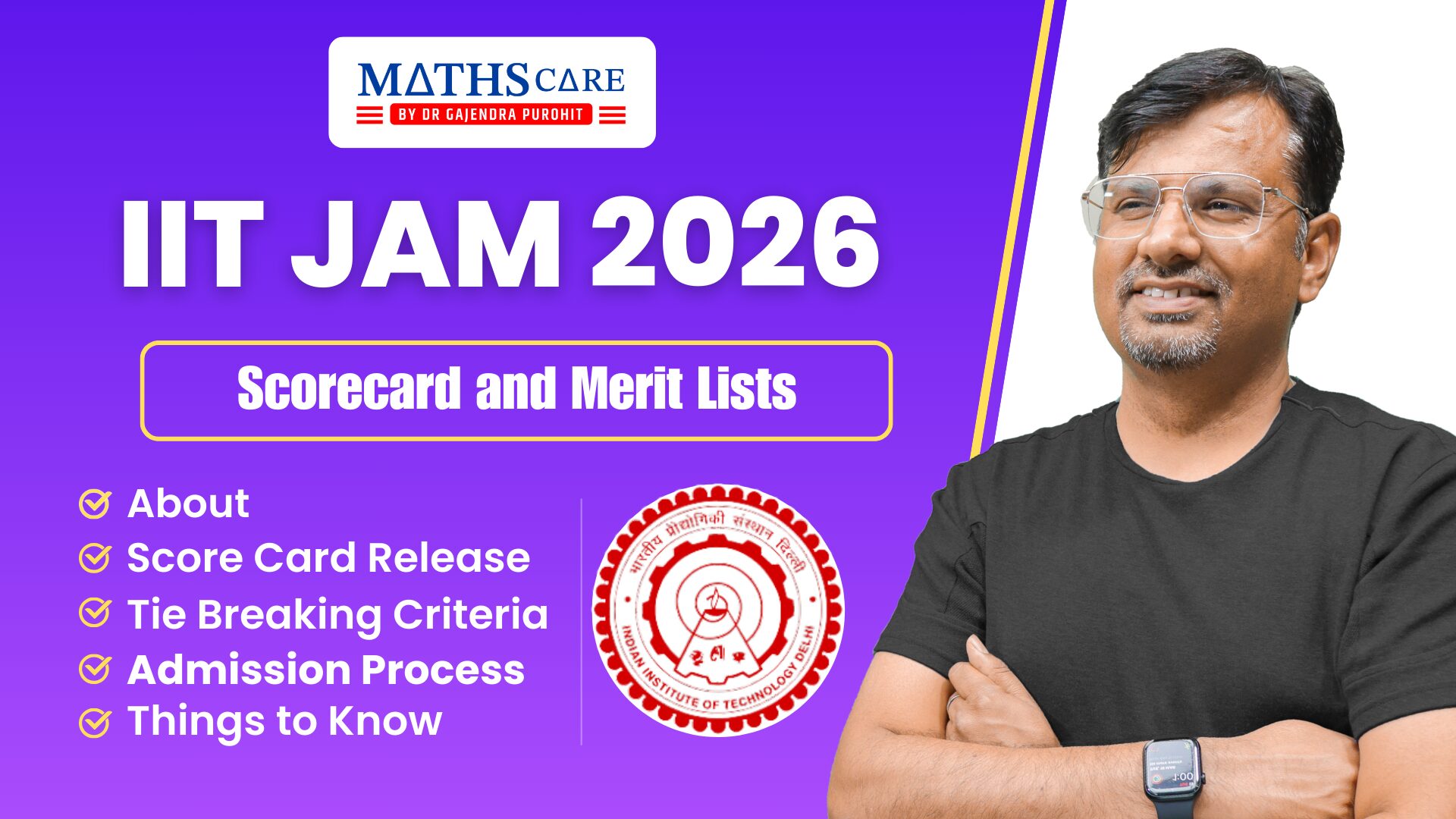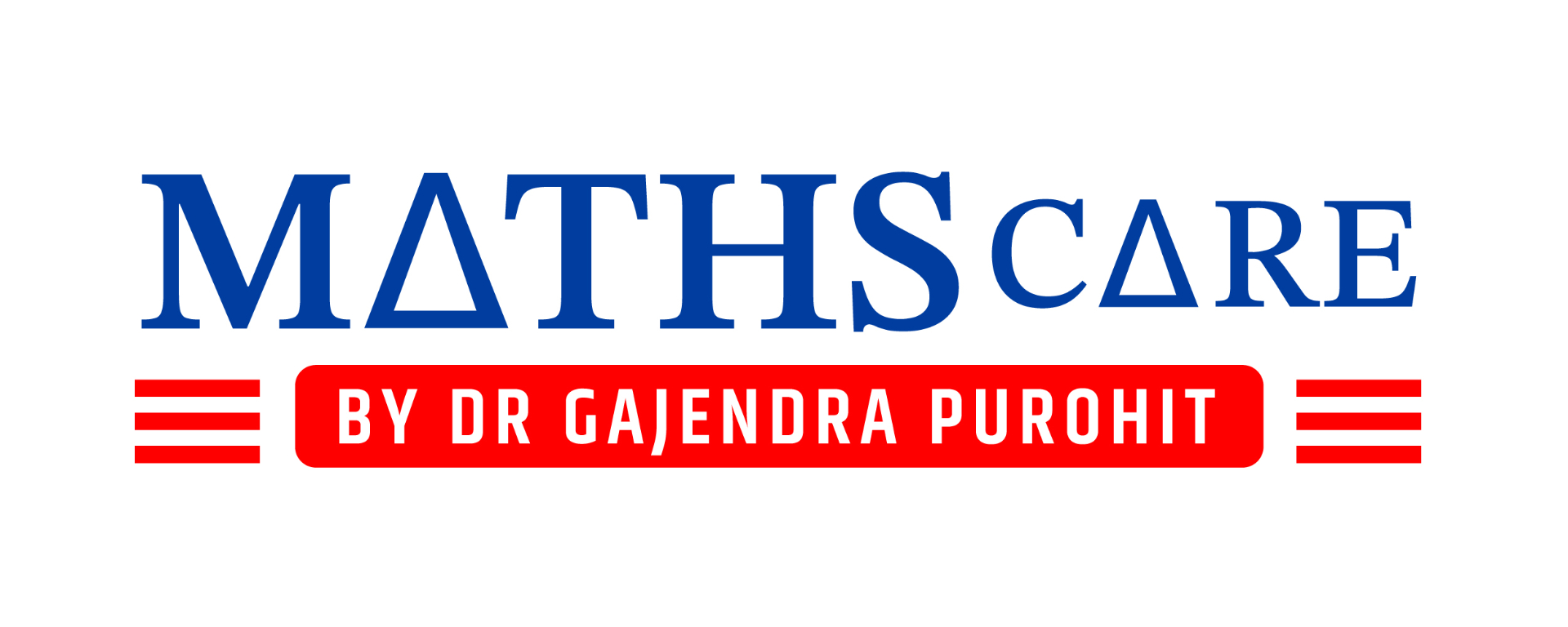Score 50 Marks in IIT JAM 2025 Mathematics
The IIT Joint Admission Test for M.Sc. (IIT JAM) is a golden opportunity for aspirants aiming to pursue higher studies in mathematics at India’s most prestigious institutions. Scoring 50 marks in IIT JAM 2025 Mathematics is an achievable goal with the right strategy and focused preparation. This blog provides a thorough guide to help you reach this milestone, covering essential information about the exam, syllabus, cutoffs, topic prioritization, and section-wise strategies for MCQs, MSQs, and NATs. Read on for detailed insights that can help you maximize your performance and secure your dream career in mathematics.

About IIT JAM
IIT JAM is a national-level entrance exam conducted by the Indian Institutes of Technology (IITs) on a rotational basis. It is a gateway for students aspiring to pursue M.Sc., Joint M.Sc.-Ph.D., and other post-graduate programs at IITs and IISc. The exam tests candidates on core topics in mathematics, requiring a solid grasp of concepts and problem-solving skills. IIT JAM stands apart for its rigorous nature, demanding deep analytical understanding in the chosen subject.
Organizing Institute for IIT JAM 2025
For the 2025 session, IIT Madras is the organizing institute for JAM. As the primary organizer, IIT Madras is responsible for setting the question paper, conducting the examination, and managing registrations and results. Known for its high academic standards and research orientation, IIT Madras ensures that IIT JAM Mathematics maintains a high level of difficulty and assesses aspirants’ readiness for post-graduate education.
Syllabus for IIT JAM Mathematics
The IIT JAM Mathematics syllabus for 2025 includes essential topics such as:
Sequence & Series
Linear Algebra
Group Theory
Ordinary Differential Equations (ODE)
Integral Calculus
Functions of One Variable
Functions of Two Variables
Unlike other competitive exams, the IIT JAM Mathematics syllabus is focused on pure mathematics. There is no inclusion of subjects like Numerical Methods, Complex Analysis, Vector Calculus, or Probability and Statistics. This makes the syllabus narrower, allowing students to dive deep into the core mathematical topics that are vital for success in graduate studies.
Important Topics and Weightage
Understanding the weightage of each topic can help prioritize study efforts. Based on previous trends and the syllabus, here are the crucial topics and their approximate question distributions:
Sequence & Series – 4 questions
Linear Algebra – 7 questions
Group Theory – 4 questions
Ordinary Differential Equations (ODE) – 4 questions
Integral Calculus – 4 questions
Functions of One Variable – 5 questions
Functions of Two Variables – 2 questions
Focusing on these high-weightage topics is essential for scoring well in IIT JAM. A well-balanced preparation strategy should give priority to areas like Linear Algebra and Functions of One Variable, as they carry significant weight in the paper.
Expected Cutoffs
The cutoff for IIT JAM Mathematics typically varies based on factors such as the difficulty level of the paper and the number of candidates appearing. For the General category, recent cutoffs have been around 24 to 34 marks. For reserved categories, the cutoff marks are generally lower. Scoring 50 marks can place you well above the cutoff, ensuring eligibility for top institutions.
For 2025, the estimated cutoff is expected to be around 28-30 marks for the General category. Achieving a score of 50 would not only guarantee qualification but also improve the chances of getting into a preferred IIT or IISc Bangalore for higher studies in mathematics.
Section-Wise Strategy
IIT JAM Mathematics consists of three types of questions: Multiple Choice Questions (MCQ), Multiple Select Questions (MSQ), and Numerical Answer Type (NAT). Each section demands a different approach to maximize accuracy and avoid negative marking.
MCQ Strategy
The MCQ section typically includes 10 questions of 1 mark each and 20 questions of 2 marks each. Here are some strategies for approaching MCQs:
Discard Options by Counter Example: For questions with multiple-choice options, try to eliminate wrong answers by using counterexamples. This technique can narrow down choices and increase the probability of selecting the correct answer.
Avoid Negative Marking: Remember that MCQs have negative marking. Avoid guesswork if you are uncertain, as incorrect answers can lower your overall score.
Review Confusing Questions: If you’re confused or unsure about a particular question, mark it for review. This approach can prevent you from spending too much time on one question and allow you to revisit it with a fresh perspective.
MSQ Strategy
The MSQ section generally includes 10 questions of 2 marks each. MSQs require deep conceptual understanding as multiple answers may be correct. Here are key points to tackle MSQs:
Deep Subjective Knowledge: Since MSQs may have more than one correct answer, they demand a thorough understanding of the topic. Avoid superficial study; dive deep into each concept to handle these questions confidently.
Multi-Concept Questions: MSQs often test more than one concept within a single question. Practice problems that require an integration of multiple ideas to be prepared for these complex questions.
NAT Strategy
The NAT section typically includes 10 questions of 1 mark each and 10 questions of 2 marks each. Here, precision and accuracy are crucial as there is no negative marking:
Calculation Accuracy: Since NAT answers are numeric, ensure accurate calculations. Double-check your work, as even small errors can result in incorrect answers.
Mind Notations, Decimals, and Ranges: Pay close attention to the question requirements. Notations, decimal places, and value ranges are essential for the correctness of your answer.
Avoid Silly Mistakes: Signs and decimal points are commonly overlooked but can alter the answer completely. Focus on precision and keep these small details in mind.
Topic-Wise Strategy
Each topic requires a tailored approach to optimize understanding and retention. Here’s a topic-wise guide:
Sequence & Series: Practice convergence and divergence tests. Familiarize yourself with standard series to tackle questions quickly.
Linear Algebra: Focus on matrices, determinants, eigenvalues, and eigenvectors, as these subtopics have consistently high weightage.
Group Theory: Understand the basics of groups, subgroups, and cyclic groups. Familiarity with Lagrange’s theorem and normal subgroups is beneficial.
Ordinary Differential Equations (ODE): Concentrate on solving first-order and higher-order ODEs. Practice finding particular and general solutions.
Integral Calculus: Master definite and indefinite integrals. Pay attention to techniques like substitution, integration by parts, and partial fraction decomposition.
Functions of One Variable: Focus on limits, continuity, differentiability, and application of derivatives. Prepare thoroughly on topics like Taylor and Maclaurin series.
Functions of Two Variables: Study partial derivatives and applications in finding maxima and minima of functions of two variables.
Career Opportunities After IIT JAM in Mathematics
Scoring well in IIT JAM Mathematics can open up rewarding career opportunities in both academia and industry. Here are some pathways:
Academic Research: IITs and IISc offer research opportunities for those interested in mathematics, leading to careers as mathematicians or scientists in research institutions.
Teaching: Pursuing an M.Sc. or Ph.D. through IIT JAM can lead to teaching positions in schools, colleges, and universities.
Data Science and Analytics: Mathematical skills are highly valued in data science roles. With further training, IIT JAM graduates can work in machine learning, data analysis, and statistical modeling.
Finance and Actuarial Science: Mathematical concepts are essential in finance and actuarial science, where opportunities are abundant for those with strong analytical skills.
Conclusion
Scoring 50 marks in IIT JAM 2025 Mathematics is achievable with a systematic approach. Focusing on high-weightage topics, following section-specific strategies, and practicing regularly can significantly boost your chances of success. Beyond the exam, IIT JAM opens doors to prestigious institutes, advanced academic research, and lucrative career paths. With dedication, smart study plans, and consistent practice, aspirants can realize their dreams of excelling in mathematics and contributing to their chosen field.
IIT JAM FAQS
IIT JAM Accepted Identity Documents
For Indian nationals: Aadhaar-UID, Passport, PAN Card, Voter ID, and Driving License. For foreign nationals: Passport or any other government-issued ID.
IIT JAM payment method.
Payments for JAM 2025 are accepted online via net banking, debit card, credit card, or UPI. The fee depends on your category, gender, and the number of selected papers.
IIT JAM form application error
If payment isn’t reflected immediately, log out and check later. If it still doesn’t show up, retry the payment process and contact JAM support if needed.
Fee for Rectifying Defects in IIT JAM
No fees are required to rectify defects identified during the scrutiny process.
Indian Mobile Number Requirement
An Indian mobile number is mandatory for application. If you don’t have one, you can use a friend’s or relative’s number. Information will be sent via SMS to this number.
How to verifying Mobile Number for form.
You must verify the mobile number after submitting the application, though it can be submitted without initial verification. Email verification is also mandatory.
BEST OFFERING COURSES FOR YOU
BEST BOOKS FOR IIT JAM/ CSIR-NET
BUY BOOKS ON OUR APP
RECENT POSTS

IIT JAM 2025 Scorecard and Merit Lists

IIT JAM Mathematics Syllabus 2025












